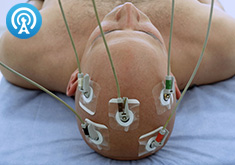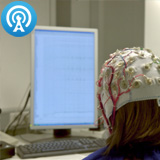Una guía de acción basada en evidencias | 07 JUL 14
Primera convulsión en un adulto, ¿cómo actuar?
Una revisión paso a paso de las conductas recomendadas ante un paciente que presenta su primer episodio convulsivo.

- Day SC, Cook EF, Funkenstein H, Goldman L. Evaluation and outcome of emergency room patients with transient loss of consciousness. Am J Med1982;73:15-23.CrossRefMedlineWeb of Science
- ↵Leach JP, Lauder R, Nicolson A, Smith DF. Epilepsy in the UK: misdiagnosis, mistreatment, and undertreatment? The Wrexham area epilepsy project. Seizure2005;14:514-20.CrossRefMedlineWeb of Science
- ↵Smith D, Defalla BA, Chadwick DW. The misdiagnosis of epilepsy and the management of refractory epilepsy in a specialist clinic. QJM1999;92:15-23.Abstract/FREE Full Text
- ↵Angus-Leppan H. Diagnosing epilepsy in neurology clinics: a prospective study. Seizure2008;17:431-6.CrossRefMedlineWeb of Science
- ↵Forsgren L. Prospective incidence study and clinical characterization of seizures in newly referred adults. Epilepsia1990;31:292-301.CrossRefMedlineWeb of Science
- ↵Zaidi A, Clough P, Cooper P, Scheepers B, Fitzpatrick AP. Misdiagnosis of epilepsy: many seizure-like attacks have a cardiovascular cause. J Am Coll Cardiol2000;36:181-4.CrossRefMedlineWeb of Science
- ↵Hoefnagels W, Padberg G, Overweg J, Van der Velde E, Roos R. Transient loss of consciousness: the value of the history for distinguishing seizure from syncope. J Neurol1991;238:39-43.CrossRefMedlineWeb of Science
- ↵Hauser WA, Rich SS, Annegers JF, Anderson VE. Seizure recurrence after a 1st unprovoked seizure: an extended follow-up. Neurology1990;40:1163-70.CrossRef
- ↵King MA, Newton MR, Jackson GD, Fitt GJ, Mitchell LA, Silvapulle MJ, et al. Epileptology of the first-seizure presentation: a clinical, electroencephalographic, and magnetic resonance imaging study of 300 consecutive patients. Lancet1998;352:1007-11.CrossRefMedlineWeb of Science
- ↵Angeles DK. Proposal for revised clinical and electroencephalographic classification of epileptic seizures. Epilepsia1981;22:489-501.CrossRefMedlineWeb of Science
- ↵Commission on Classification and Terminology of the International League Against Epilepsy. Proposal for revised classification of epilepsies and epileptic syndromes. Epilepsia1989;30:389-99.CrossRefMedlineWeb of Science
- ↵Berg AT, Berkovic SF, Brodie MJ, Buchhalter J, Cross JH, van Emde Boas W, et al. Revised terminology and concepts for organization of seizures and epilepsies: report of the ILAE Commission on Classification and Terminology, 2005-2009. Epilepsia2010;51:676-85.CrossRefMedlineWeb of Science
- ↵Jallon P, Goumaz M, Haenggeli C, Morabia A. Incidence of first epileptic seizures in the canton of Geneva, Switzerland. Epilepsia1997;38:547-52.CrossRefMedlineWeb of Science
- ↵Loiseau J, Loiseau P, Guyot M, Duche B, Dartigues JF, Aublet B. Survey of seizure disorders in the French southwest: I. Incidence of epileptic syndromes. Epilepsia1990;31:391-6.CrossRefMedlineWeb of Science
- ↵Placencia M, Suarez J, Crespo F, Sander JW, Shorvon SD, Ellison RH, et al. A large-scale study of epilepsy in Ecuador: methodological aspects. Neuroepidemiology1992;11:74-84.CrossRefMedlineWeb of Science
- ↵Meinardi H, Scott RA, Reis R, Sander JW, for the ILAE Commission on the Developing World. The treatment gap in epilepsy: the current situation and ways forward. Epilepsia2001;42:136-49.CrossRefMedlineWeb of Science
- ↵Lavados J, Germain L, Morales A, Campero M, Lavados P. A descriptive study of epilepsy in the district of El Salvador, Chile, 1984-1988. Acta Neurol Scand1992;85:249-56.CrossRefMedlineWeb of Science
- ↵Hart Y, Sander J, Shorvon S, Johnson A. National general practice study of epilepsy: recurrence after a first seizure. Lancet1990;336:1271-4.CrossRefMedlineWeb of Science
- ↵Hauser WA, Annegers JF, Kurland LT. Incidence of epilepsy and unprovoked seizures in Rochester, Minnesota: 1935-1984. Epilepsia1993;34:453-68.CrossRefMedlineWeb of Science
- ↵Hauser WA, Annegers JF, Rocca WA. Descriptive epidemiology of epilepsy: contributions of population-based studies from Rochester, Minnesota. Mayo Clin Proc1996;71:576-86.CrossRefMedlineWeb of Science
- ↵All Party Parliamentary Group on Epilepsy. Wasted money, wasted lives: the human and economic cost of epilepsy in England. Stationery Office, 2007.
- ↵Zielinski JJ. Epidemiology and medicosocial problems of epilepsy in Warsaw: final report on research program. Psychoneurological Institute, 1974.
- ↵Beran RG, Michelazzi J, Hall L, Tsimnadis P, Loh S. False-negative response rate in epidemiologic studies to define prevalence ratios of epilepsy. Neuroepidemiology1985;4:82-5.CrossRefMedline
- ↵Jacoby A, Baker G, Smith D, Dewey M, Chadwick D. Measuring the impact of epilepsy: the development of a novel scale. Epilepsy Res1993;16:83-8.CrossRefMedlineWeb of Science
- ↵Bellon M, Walker C, Peterson C, Cookson P. The “E” word: epilepsy and perceptions of unfair treatment from the 2010 Australian Epilepsy Longitudinal Survey. Epilepsy Behav2013;27:251-6.CrossRefMedlineWeb of Science
- ↵Bellon M, Walker C, Peterson C. Seizure-related injuries and hospitalizations: self-report data from the 2010 Australian Epilepsy Longitudinal Survey. Epilepsy Behav2013;26:7-10.CrossRefMedlineWeb of Science
- ↵National Institute for Health and Clinical Excellence. Transient loss of consciousness (‘blackouts’) management in adults and young people. NICE, 2010.
- ↵Caviness JN, Brown P. Myoclonus: current concepts and recent advances. Lancet Neurol2004;3:598-607.CrossRefMedlineWeb of Science
- ↵Angus-Leppan H. Migraine: mimics, borderlands and chameleons. Pract Neurol2013;13:308-18.Abstract/FREE Full Text
- ↵Cross JH. Pitfalls in the diagnosis and differential diagnosis of epilepsy. Paediatr Child Health2009;19:199-202.CrossRef
- ↵Panayiotopoulos C, Chroni E, Daskalopoulos C, Baker A, Rowlinson S, Walsh P. Typical absence seizures in adults: clinical, EEG, video-EEG findings and diagnostic/syndromic considerations. J Neurol Neurosurg Psychiatry1992;55:1002-8.Abstract/FREE Full Text
- ↵Marini C, King M, Archer J, Newton M, Berkovic S. Idiopathic generalised epilepsy of adult onset: clinical syndromes and genetics. J Neurol Neurosurg Psychiatry2003;74:192-6.Abstract/FREE Full Text
- ↵Chung SS, Gerber P, Kirlin KA. Ictal eye closure is a reliable indicator for psychogenic nonepileptic seizures. Neurology2006;66:1730-1.CrossRef
- ↵Thijs RD, Wagenaar WA, Middelkoop HA, Wieling W, van Dijk JG. Transient loss of consciousness through the eyes of a witness. Neurology2008;71:1713-8.CrossRef
- ↵Ganzeboom KS, Mairuhu G, Reitsma JB, Linzer M, Wieling W, Van Dijk N. Lifetime cumulative incidence of syncope in the general population: a study of 549 Dutch subjects aged 35-60 years. J Cardiovasc Electrophysiol2006;17:1172-6.CrossRefMedlineWeb of Science
- ↵Sheldon R, Rose S, Ritchie D, Connolly SJ, Koshman M-L, Lee MA, et al. Historical criteria that distinguish syncope from seizures. J Am Coll Cardiol2002;40:142-8.CrossRefMedlineWeb of Science
- ↵Soteriades ES, Evans JC, Larson MG, Chen MH, Chen L, Benjamin EJ, et al. Incidence and prognosis of syncope. N Engl J Med2002;347:878-85.CrossRefMedlineWeb of Science
- ↵Lempert T, Bauer M, Schmidt D. Syncope: a videometric analysis of 56 episodes of transient cerebral hypoxia. Ann Neurol1994;36:233-7.CrossRefMedlineWeb of Science
- ↵Lempert T. [Syncope: phenomenology and differentiation from epileptic seizures] [German]. Nervenarzt1997;68:620-4.CrossRefMedlineWeb of Science
- ↵Reuber M, Jamnadas-Khoda J, Broadhurst M, Grunewald R, Howell S, Koepp M, et al. Psychogenic nonepileptic seizure manifestations reported by patients and witnesses. Epilepsia2011;52:2028-35.CrossRefMedlineWeb of Science
- ↵Reuber M, Pukrop R, Bauer J, Helmstaedter C, Tessendorf N, Elger CE. Outcome in psychogenic nonepileptic seizures: 1 to 10-year follow-up in 164 patients. Ann Neurol2003;53:305-11.CrossRefMedlineWeb of Science
- ↵Commission on Epidemiology and Prognosis, International League Against Epilepsy. Guidelines for epidemiologic studies on epilepsy. Epilepsia1993;34:592-6.CrossRefMedlineWeb of Science
- ↵Haut SR, Shinnar S. Considerations in the treatment of a first unprovoked seizure. Semin Neurol2008;28:289-96.CrossRefMedline
- ↵Camfield P, Camfield C. Epilepsy can be diagnosed when the first two seizures occur on the same day. Epilepsia2000;41:1230-3.CrossRefMedlineWeb of Science
- ↵Kho LK, Lawn ND, Dunne JW, Linto J. First seizure presentation:
Comentarios
Para ver los comentarios de sus colegas o para expresar su opinión debe ingresar con su cuenta de IntraMed.
CONTENIDOS RELACIONADOS
Términos y condiciones de uso | Política de privacidad | Todos los derechos reservados | Copyright 1997-2024











